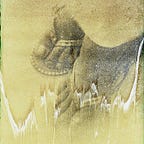Before the Flood
Cuba on the Cusp of Change
First, let me apologize for the cars. The 50s American cars. I read a story on an exhibition of recent Cuban photography where the lack of photos of Chevys in the exhibition was touted as a virtuous draw to the show. And I can understand that. Quaint and rustic, they embody this notion of Cuba itself as quaint and rustic, frozen in time. It’s a simplistic and inaccurate picture.
But in doing montages of street scenes, my attempt to help move street photography from its standard forms, I still take pictures of streets and streets in Cuba are filled with 50s American cars. And not just in Havana — in Santa Clara, Las Tunas, Santiago and on the roads and highways in between.
Cars are one of the few ways that Cubans can accumulate capital. They invest in them, improve them, earn money from them (the vast majority are taxis and form the backbone of Cuba’s public transportation system), and pass them on to their children.
I first went to Cuba in July 2014 and returned again in June of this year. I traveled in an unofficial capacity, so went through a third country. In my case the Dominican Republic and what I saw at the check-in counter at the airport in Santo Domingo — where most of the Cuban passengers paid hundreds of dollars each in excess baggage fees — and again on the baggage carousel in Havana, was unlike anything I’ve ever seen. Wheels, tires, exhaust systems, various other car parts, and huge heavy bundles of unknown contents.
Before I got to the baggage carousel, I almost forgot to ask the customs agent to please not stamp my passport. I was distracted by the numerous female customs agents, in every shape and size, walking in small groups or standing at their stations, wearing provocative black lace stockings. The design of the stockings weren’t uniform, but they seemed to be part of the uniform they wore, setting off the short olive drab skirts and blouses. This somewhat surreal sight set the tone for my experiences in Cuba.
I’ve done quite a lot of street photography in the past with a classic set-up — Leica M2 with a 28mm lens and black & white film — but more recently I’ve been shooting medium format in color. But I missed the wide angle views of street scenes from my old set-up.
When I went to Havana last summer, I came up with the idea of creating wide angle views from 6x6 negatives by overlaying the edges of multiple pictures. I think the imperfect joining fits the rough edges of Havana and the distortion the montages sometimes produce help to put across the often disorienting experience of being in the parallel universe of Cuba. Not simply a society frozen in the past, but simultaneously a society that has been striving toward a particular kind of future. I use cross-processed Ektachrome — like most of the cars there, highly valued (by me anyway) and no longer made — to create a color palette evocative of a different time.
Walking the streets, I found that Cubans are the most outgoing, talkative people I have ever met, and they seem particularly interested in talking to an American. It’s a place with a tangled history when it comes to Americans, as I was reminded by passing San Juan Hill on the road from Santiago to Playa Siboney and a little while later, passing by the little house from which Castro and a hundred comrades launched the revolution in 1953 with their ill-fated raid on the army barracks in Santiago. Now with that history taking a turn, I want to understand and portray the present.
In Santa Clara, a small tranquil city in central Cuba, I walked out from the relatively prosperous center across the river to the dusty streets of a poor neighborhood where I found the old man and young man playing chess (at the same time, there was a huge chess tournament attracting players from all over Latin America in the cultural center off the town square). Next door to them was a woman who started up a conversation with me and while we were talking, her neighbor’s 4 year-old daughter ran out of the house to greet and climb aboard a little “train” headed by a smiley-faced engine with a couple carloads of gleeful little kids in tow. It was like something out of Disneyland without the Disneyland.
I hope I’m not selfish in wishing that, along with Cubans’ economic conditions improving, increased connection to the outside world and freedom to communicate and travel, that some things aren’t lost. I hope my pictures don’t romanticize or come across as sentimental. That’s not what I intend. I heard enough stories of the difficulties of people’s lives to avoid those feelings. What I learned is to respect the Cuban people, struck by the stories I heard of what they value, what they want to hold on to and what they desperately want to see improved as they look toward potentially significant changes in their future.
Click here for more from a trip to Baracoa, a slice of magical realism on the far eastern tip of the island.
